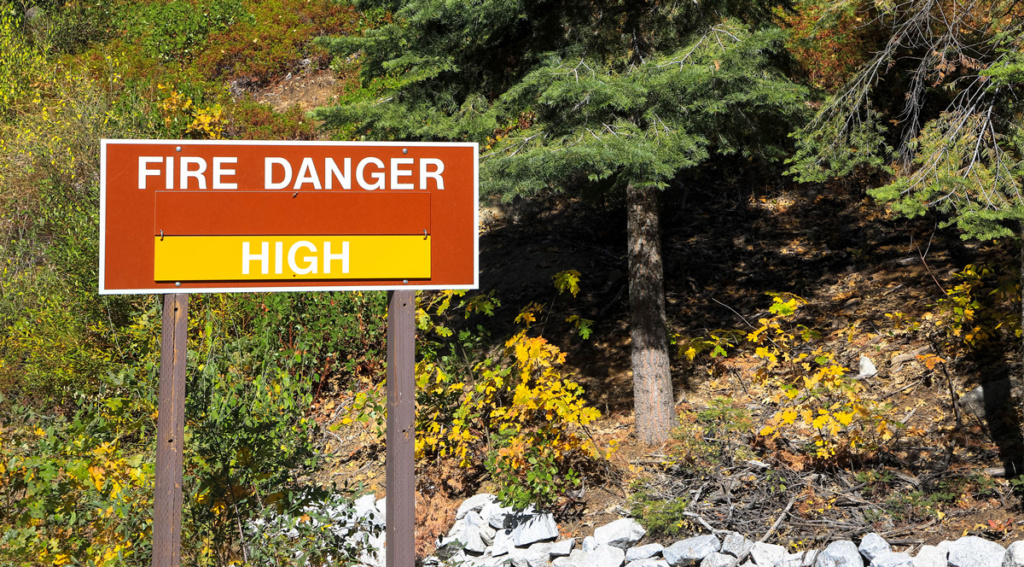It’s wildfire season in Oregon and Idaho and advance preparation for wildfires is critical for anyone living close to wild lands. Here are some tips to get you started:
Preparing for wildfire
- Keep tabs on active wildfires in Oregon and Idaho using the Wildfire Tracker.
- Create a defensible space by clearing away dry grass and brush at least 100 feet from your home. Move firewood, grills and anything flammable at least 30 feet away. Find more tips below.
- Create a wildfire action plan for your family, and review it regularly. Include escape routes, places to meet, contact info and emergency numbers (both in your cell-phone and written in your wallet). More information is below.
- Share emergency contact information with neighbors and others you can depend on who live out of your area.
- Walk your family through your house and property, pointing out the items of greatest importance. If (and only if) safety permits, you can grab these items on your way out the door.
- Keep your important papers in a fireproof, waterproof box. Include financial documents and account information (legal papers including birth certificates, passports, real estate deeds and wills), insurance information, and medical information.
- Have a “go bag” ready with clothing, toiletries and other necessities for three days. This can also include an Emergency Preparedness Kit.
- Take photos or video inside and outside your home to document your possessions and save them somewhere safe and accessible. This will help in the event that you need to make insurance claims for destroyed property.
- Get pets used to leashes, halters, crates and trailers and include them in family emergency drills.
Creating a defensible space
- Keep the areas closest to your home clear of shrubs and trees, if possible. Instead of flammable plants, use concrete, rocks or other noncombustible materials for landscaping. On the other hand, if you do have plants close to your home, keep them pruned and as far away from the structure as you can.
- Clear roof surfaces and gutters regularly to avoid accumulation of flammable materials.
- Remove dead vegetation and keep grass short – about 3-4 inches.
- Trim tree limbs so they are at least 10 feet from other trees, chimneys and decks. Remove branches that hang over the roof or garage.
- Use fire-resistant plants strategically around your home to slow fires from reaching your primary structure, such as rockrose, ice plant and aloe.
- Keep all combustibles, such as firewood and picnic tables, away from structures.
Make your home fire resistant
- For maximum fire resistance, the roof and exterior structure of your home should be made of noncombustible or fire-resistant materials. For example, use tile, slate, sheet iron, aluminum, brick or stone. Fences and decks can also be upgraded to fire-resistant materials.
- Install a chimney guard to keep sparks from landing on the roof. Cover all exterior vent openings with 1/8-inch to 1/4-inch metal mesh to reduce the possibility of burning embers getting into or under your home.
- Consider replacing windows with double-pane, tempered glass windows, which are less likely to crack in high temperatures.
- Locate propane tanks away from buildings and flammable vegetation.
- Leave garden hoses connected to hose bibs.
- Clearly mark addresses at all roadway entrances and make sure they are easily visible from the street.
- If possible, make private roads and driveways wide enough for emergency vehicles like fire trucks.
Creating a wildfire safety plan
- Know where to go. Discuss escape routes and places to meet up, and make sure every family member is clear on the plan. Practice evacuating from time to time, and get pets involved in the fire drills, too.
- Know who to call. Program emergency phone numbers in your cell phone, including out-of-area phone and email contacts who can relay information during an emergency.
- Know what to take. Have a bag ready with clothing, toiletries and other items, such as prescription medications, that will last you for at least three days. Plan to easily grab important items or keepsakes on the way out the door if it’s safe to do so.
- Protect your valuables. Keep important documents in a fireproof, waterproof box, such as passports, birth certificates, wills, real estate deeds, and medical information.
- Document, document, document. Take photos of your home and personal possessions, and keep them somewhere safe. Don’t forget to photograph the contents of attics, basements, garages, shops, and closets. Also, document expensive equipment, including ATVs and riding lawnmowers. Creating a home inventory is the best way to track it all.
Evacuating
- Keep up-to-date on news reports and instructions from officials and emergency responders
- You may need your ID to re-enter an evacuated neighborhood, so make sure you and your family have your identification handy and ready to grab.
- Don’t procrastinate. Leave as soon as you can following an evacuation order. It’s safer for you and allows emergency responders more time to protect the area.
Protecting yourself and your family
Preparing for wildfire is critically important to reducing your wildfire risk. Make sure your home, property, and family are covered in the event of a wildfire with the right insurance policy. AAA Insurance Professionals are here to help you get coverage that meets your needs and shop for the best available rates.


